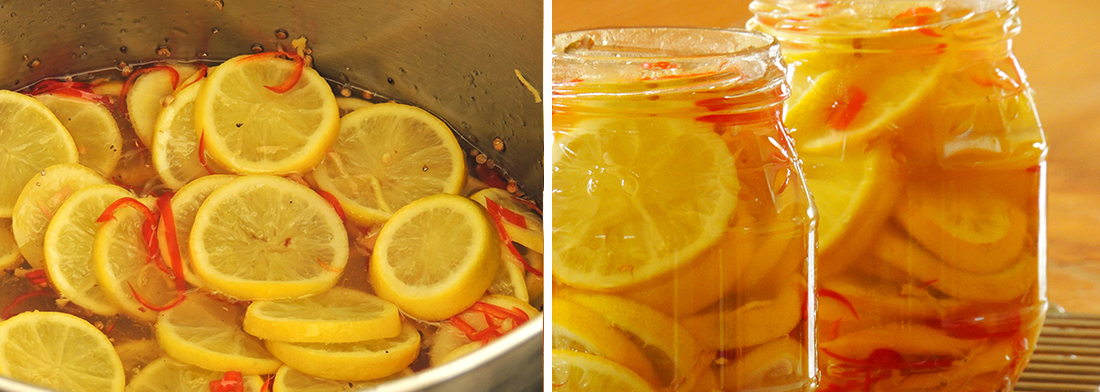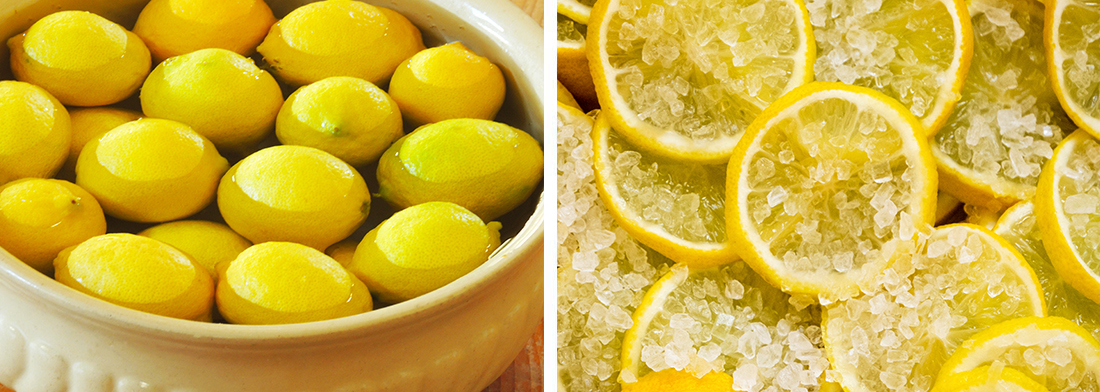Punjab Pickled Limes
- Pickles, Chutney, Relish & Sauces

These pickled limes are hot, salty, sweet and sour all in one mouthful. Originating from the north Indian Punjab region, noted for its pallows, biryani, qorma (korma), haleem, nihari and various types of lentils and pulses, these home preserved pickled limes are a wonderful addition to your next curry night.
Easy to prepare, the limes are pickled over two days, but don’t dismay as most of this doesn’t require your time. The soaking and salting is prepared ahead of time with the final finishing taking less than 60 minutes.
- Preparation Time:
- 60 minutes including 2 preparations for overnight soaking
- Cooking Time:
- 60 minutes
- Quantity:
- 3 x 400 ml jars
PREPARATION
Day 1: Wash and soak limes overnight
Day 2: Layer soaked limes with preserving salt and leave to stand overnight
Day 3: Sterilise and dry glass jars and lids for the final

INGREDIENTS
- 1 kg
- Ripe limes
- 75g
- Preserving salt
- 6
- Green cardamon pods, crushed gently to release the seeds
- 6
- Whole cloves
- 1 teaspoon
- Cumin seeds
- 4
- Fresh red chilli, seeded and sliced
- 5 cm
- Fresh ginger root, peeled and finely shredded
- 450g
- White sugar

METHOD
This unique pickle is made over 2 days. Most of the time involves soaking and preparing the limes overnight in a 2 stage preparation process for the final pickling stage.
Day 1
- Gently wash each lime to remove any dirt or garden debris or wax often used a part of commercial processing.
- Place limes is a large bowl, cover with cold water and soak for minimum 8 hours, but perferrably overnight.
Day 2
- Drain the limes and discard the water.
- If the limes are small stating at one end and moving progressively to the other end, slice approximately into 5 mm or ¼ inch round slices using a knife or mandolin.
- If the limes are larger, slice the lime in half, longways first, and then starting at one end and moving progressively to the other end, slice approximately into 5 mm or ¼ inch slices
- Place a layer of lime slices in a large bowl, sprinkle with some salt, place another layer of limes on top and sprinkle with salt. Continue in this manner until all the limes and salt have been used, making sure the final layer is the salt.
- Cover with ling wrap or a tea towel and leave to stand for another 8 hours or or preferably overnight.
The next day, place a bowl under a colander; drain the limes and catch the lime juice is the bowl. Pour into a large preserving pan. This will form part of the preserving liquid is Step 2.
Crush the cardamom and cumin seeds together.
Add the crushed seed mixture, sliced chilli, shredded ginger and sugar to the preserving pan. Bring to a gentle boil, stirring occasionally until the sugar has dissolved. Turn down and simmer for approximately 2 minutes to commence the flavour extraction from the spices. Leave to cool.
In a large bowl, gently mix the drained sliced limes and the cool syrup together so that each lime slice is completely covered in the syrup. Place the sliced limes into warm sterilised dry sealable jars.
Use a funnel and ladle the syrup over the fruit. Fill to approximately 2.5cm (1 inch) from the top of the bottle and seal.
Label and store in a cool dark place in the kitchen or pantry.
Allow the pickled limes to mature for 4 weeks before eating. Use within a year.
NOTES
- Use un-waxed limes or if they are unavailable gently scrub to remove the wax. The wax will be unpleasant to eat and will affect the final quality of the pickle.
- Salting softens the rind and intensifies the flavour.
- Use pickling salt, not table salt, when making pickles and preserves. Table salt contains stabilisers and anti-caking agents and often iodide which forms a whitish haze and sediment. These additives can affect the appearance and taste of pickles and preserves during the maturation and storage period. The ingestion of a cocktail of anti-caking chemicals such as calcium silicate, sodium silicoaluminate, tricalcium phosphate, magnesium carbonate, silicon dioxide and yellow prussate of soda, is also unnecessary.
- I recommend removing the clove from the cooled aromatic sugar syrup before bottling. The clove flavour will continue to develop in the pickle and many become over powering.
- This is a salty pickle from the Punjab area in Northern Indian and is best served with under-seasoned dishes. Serve either directly from the jar or place some slices in a small dish as part of the curry accompaniments.
